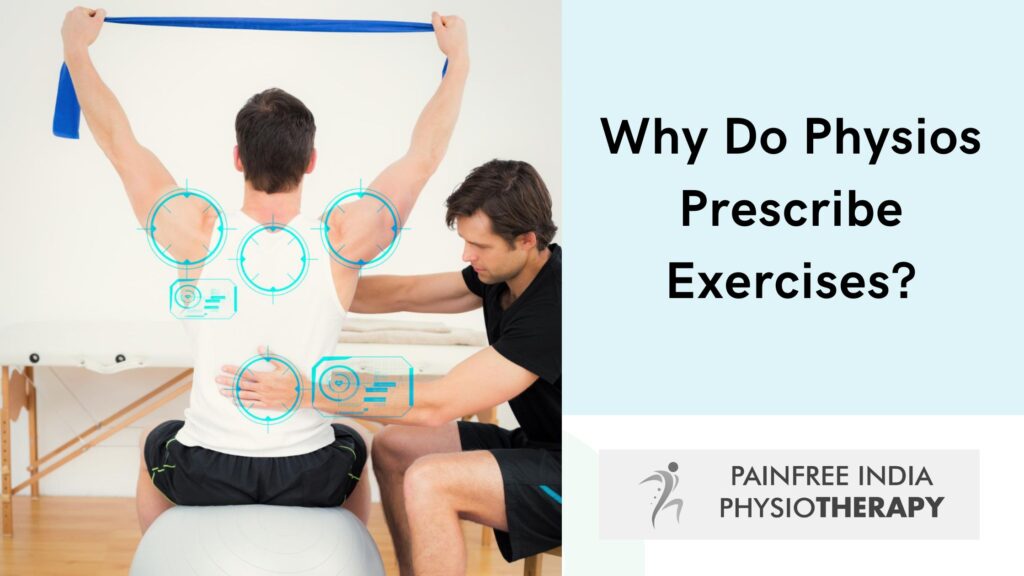
The importance of physiotherapists in ensuring proper body function has increased as more people adopt healthier lifestyles. While many people may be aware of the conventional techniques used by physiotherapists to treat injuries, such as massage and joint mobilisation, not everyone is aware of why exercises are frequently recommended as an essential component of a patient’s treatment plan. This article will examine the rationale behind physiotherapists’ recommendations for exercises as well as some of the well-liked physiotherapy methods on the market, including Gurgaon cupping therapy and Gurgaon dry needling therapy.
Understanding Why Physios Prescribe Exercises
In order to assist patients in regaining their strength and mobility, physiotherapists frequently recommend exercises. Muscles and joints can weaken after an injury or surgery, and the affected area may feel stiff and painful. Exercise helps to increase blood flow to the affected area, improve joint flexibility, and stretch and strengthen muscles. As a result, patients’ mobility and function gradually improve, making it easier for them to resume their daily activities.
Exercises are recommended by physiotherapists in order to aid in the prevention of future injuries. Strengthening the muscles and joints through exercise can help make them more injury-resistant. Physiotherapists can design exercise regimens that increase the body’s general stability and lower the risk of further injuries by focusing on particular muscles and joints. Exercises that enhance posture and body mechanics can also aid in preventing pain and dysfunction in other body parts.
Cupping Therapy in Gurgaon
A common physiotherapy technique called cupping therapy in Gurgaon uses cups to apply suction to the skin. Glass, bamboo, and plastic are a few materials that can be used to make the cups.. The cups are placed on particular body parts during the procedure, and a hoover is created inside of them. The suction effect can enhance blood flow, ease tension in the muscles, and encourage relaxation.
Since ancient times, traditional Chinese medicine has used cupping therapy to treat a range of conditions like pain, inflammation, and respiratory problems. It has gained popularity as an alternative therapy in recent years across many continents. Although it may temporarily irritate the skin or cause bruising or redness, cupping therapy is generally risk-free and has few side effects.
Dry Needling Therapy in Gurgaon
Another well-liked physiotherapy technique is dry needling therapy in Gurgaon, which involves pricking the skin with tiny needles to target particular muscle trigger points. Although the needles used in acupuncture and dry needling therapy are similar, the two techniques are not the same. While dry needling therapy is based on Western anatomy and physiology, acupuncture is based on traditional Chinese medicine.
The use of dry needling therapy in Gurgaon can ease pain, increase joint mobility, and lessen muscle tension. The method of treatment involves stimulating the nervous system to release endorphins and other naturally occurring painkillers. Although it may temporarily aggravate soreness or bruising at the site of the needle insertion, dry needling therapy is generally risk-free and has few adverse effects.
It is significant to note that when creating a treatment plan, physiotherapists consider the patient’s general health and medical background. To meet the patient’s unique needs, they might combine different physiotherapy techniques. Physiotherapists can help their patients recover from injuries, manage chronic pain, and enhance their overall quality of life by closely collaborating with them to develop an effective treatment plan.
Read More: How Long Before I See Results From Pilates
Conclusion
Exercises are a crucial component of the treatment plan that physiotherapists recommend to help patients regain their strength and mobility, avoid further injuries, and improve overall function. In Gurgaon, two well-liked physiotherapy methods that can ease pain, enhance joint mobility, and lessen muscle tension are cupping therapy and dry needling therapy. A physiotherapist can create a personalised treatment plan for you that includes exercises and other physiotherapy methods to help you get back on track if you are in pain or uncomfortable.

Leave feedback about this